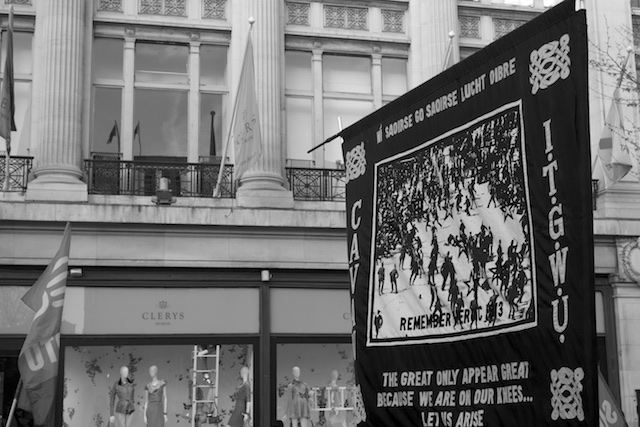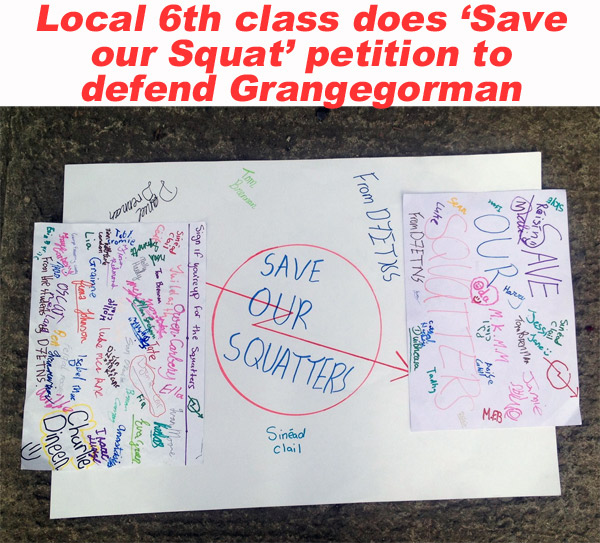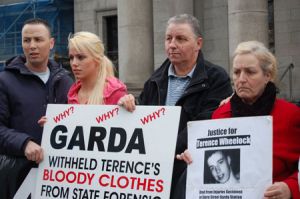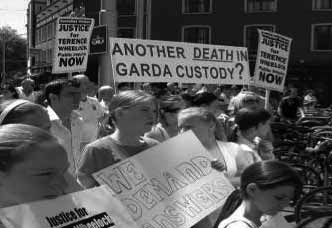Over 30 years of anarchist writing from Ireland listed under hundreds of topics
Dublin
What was the 1913 Dublin Lockout
 The 1913 lockout occurred when the Dublin bosses under William Martin Murphy tried to destroy the syndicalist ITGUW by locking out all workers who refused to resign from the union.
The 1913 lockout occurred when the Dublin bosses under William Martin Murphy tried to destroy the syndicalist ITGUW by locking out all workers who refused to resign from the union.
Self organising and the city - Squatting panel at Dublin Anarchist Bookfair 2015 video & audio
What are the challenges and possibilities of popular self-organisation to reclaim our lives, our homes and our cities.
At this years Dublin anarchist bookfair Jenny and Zoe looked at recent occupations in Dublin, including the Grangegorman Squat in Smithfield where resistance to eviction is ongoing
Grangegorman residents key points on the March 2015 attempt to evict
 The text that follows was published by the residents of the squatted complex at Grangegorman on 24 March to describe the day long eviction attempt they succesfully resisted on the previous day. It was initally published on their Facebook page and handed out in leaflet form to people walking by the complex. The words are there own.
The text that follows was published by the residents of the squatted complex at Grangegorman on 24 March to describe the day long eviction attempt they succesfully resisted on the previous day. It was initally published on their Facebook page and handed out in leaflet form to people walking by the complex. The words are there own.
On Monday 23rd March, the squatted buildings at Grangegorman, where a community has been living for a year-and-a-half, was the subject of a violent attempted eviction by a large force of contractors and Gardaí. Here is a summary of the situation.
Grangegorman resists Eviction
 We covered the attempted eviction of the squatted complex at Grangegorman during the week of via our new Facebook page, youtube and Twitter.
We covered the attempted eviction of the squatted complex at Grangegorman during the week of via our new Facebook page, youtube and Twitter.
For those not familar with Dublin the attempted eviction is happening just 100m north of Smithfield Square. The complex consists of a mix of residentical, industrial & commercial premises that had been left derlict for up to 15 years. There had been a couple of eviction scares previously but at 6.30am on the morning of Monday 23rd March the residents were suddenly worken by the sound of a gang of over 30 men smashing their way into the compound and in at least one case into their houses.
One of our reporters was awoke shortly afterwards to a text message sayiong this was happening and they made their way down, the coverage that follows is a result of their work and the work of other WSM reporters. We've edited the updates together and improved their readibility.
Squatting, Urban Politics & the Dublin Housing Action Committee: 1968-71
 The contemporary crisis of capitalism has made markedly visible the relationship between finance capital and property speculation, between the concentrated money-power of bankers and speculators and the shaping of the built environment in our towns and cities.
The contemporary crisis of capitalism has made markedly visible the relationship between finance capital and property speculation, between the concentrated money-power of bankers and speculators and the shaping of the built environment in our towns and cities.
1913 Lockout in Dublin & Larkinism - beyond the myths
 In this article, Donal Ó Fallúin looks briefly at the politics, ideas and misconceptions around the Dublin Lockout of 1913, and shows that the event is much more complex than many have allowed it to be, by attempting to narrow it down to a small event within the nationalist narrative of the period.
In this article, Donal Ó Fallúin looks briefly at the politics, ideas and misconceptions around the Dublin Lockout of 1913, and shows that the event is much more complex than many have allowed it to be, by attempting to narrow it down to a small event within the nationalist narrative of the period.
The 1913 Lockout is a monumental event in the history of the Irish working class. It marks the single greatest confrontation between the forces of labour and capital in Irish history, and the six-month dispute which tore Dublin apart saw a new, militant spirit of trade unionism collide with the force of native capitalism in an unprecedented manner.
The experience of the Social Solidarity Network
 The Social Solidarity Network came into existence in the Autumn of 2009 in Dublin as an initiative of the Workers Solidarity Movement. It faded out of existence a few short months later and never amounted to all that much in the interim beyond a couple of meetings, a leaflet distribution at a mass ICTU march and a badly organised and executed protest at the Dail on budget day. Nevertheless there are some useful lessons (mostly of the ‘how not to do it variety’) to be taken from its short existence.
The Social Solidarity Network came into existence in the Autumn of 2009 in Dublin as an initiative of the Workers Solidarity Movement. It faded out of existence a few short months later and never amounted to all that much in the interim beyond a couple of meetings, a leaflet distribution at a mass ICTU march and a badly organised and executed protest at the Dail on budget day. Nevertheless there are some useful lessons (mostly of the ‘how not to do it variety’) to be taken from its short existence.
Interview with Larry Wheelock: “No Justice, Just Us”

In what will be widely seen as a part of an ongoing cover up the the Gardai Ombudsman has released a report which claims Terence Wheelock was not mistreated in Store street Gardai station (where he died). Here we reproduce a long interview with his brother Larry who, along with the rest of the family, has spent years campaigning for justice for Terence.
---
The family and friends of Terence Wheelock are still waiting for a credible and complete account of what happened in the station from the Garda [1] . In 2005 they launched a campaign demanding an independent inquiry into the case.
Evidence disappears in Store Street Garda station Wheelock case
In July the Garda Ombudsman announced that it will begin an inquiry into the arrest and death of Terence Wheelock following injuries sustained in custody at Store Street Garda station in June 2005. This announcement follows two years of silence, denial and cover up by the Gardai and the political establishment.
Justice for Terence Wheelock
 Just over a year ago, on the 2nd of June 2005 Terence Wheelock was arrested on suspicion of car theft and brought to Dublin’s Store Street Garda station. Just two hours after his arrest he was found unconscious in his cell. He entered a coma and passed away in September 2005.
Just over a year ago, on the 2nd of June 2005 Terence Wheelock was arrested on suspicion of car theft and brought to Dublin’s Store Street Garda station. Just two hours after his arrest he was found unconscious in his cell. He entered a coma and passed away in September 2005.

